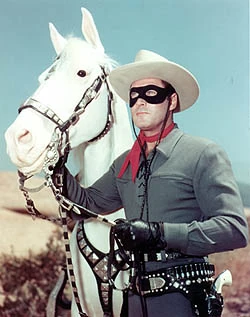Unintended consequences: outcomes of a purposeful action that are not intended or foreseen.
~American Sociologist Robert K. Merton
To understand the law of unintended consequences, look no further than the Violent Crime Control and Law Enforcement Act of 1994 (obviously named by someone who did not appreciate the value of a catchy acronym like CARES) or “stop and frisk.” Both had legitimate goals, bringing down the crime rate, especially in inner cities where Black Americans were more likely to be the victims of violent crimes. However, these purported beneficiaries, in too many instances, instead became casualties of misguided or overzealous law enforcement, leading to the current push for criminal justice reform and the Black Lives Matter movement.
Then, what is the difference between unintended consequences and stupid consequences? When it comes to stupid consequences, regardless of a law’s initial objective, proponents should have known there would be negative outcomes prior to passage or implementation. How? History! The same adverse aftereffects were observed and documented in a similar situation once before.
Which brings me to the most recent example, Donald Trump’s rescinding of an Obama-era rule to combat housing discrimination. Yesterday, during a speech in Midland, Texas, he laid it out in black and white (pun intended).
You know the suburbs, people fight all of their lives to get into the suburbs and have a beautiful home. There will be no more low-income housing forced into the suburbs. … It’s been going on for years. I’ve seen conflict for years. It’s been hell for suburbia.
First, for any action to be subject to the law of stupid consequences, it need not be worthy to start with. Definitely the case in this “bullhorn” to Trump’s base. Of course, as with  most Trump claims, the facts undercut his argument. First, the July 2015 rule said nothing about forced low-income housing. It clarified data requirements to determine whether there was persistent housing segregation within a jurisdiction. Any deficiencies in data collection needed to be addressed if the city or county sought additional federal housing assistance. Second, and more damning, the median housing value since announcement of the rule has risen from $215,715 in July 2015 to $271,768 in July 2019. (Can you say 25.9 percent? I knew you could.) Does anyone want to guess where the price of housing has risen the most? Ooo! Ooo! Call on me: I know, I know. Suburban America.
most Trump claims, the facts undercut his argument. First, the July 2015 rule said nothing about forced low-income housing. It clarified data requirements to determine whether there was persistent housing segregation within a jurisdiction. Any deficiencies in data collection needed to be addressed if the city or county sought additional federal housing assistance. Second, and more damning, the median housing value since announcement of the rule has risen from $215,715 in July 2015 to $271,768 in July 2019. (Can you say 25.9 percent? I knew you could.) Does anyone want to guess where the price of housing has risen the most? Ooo! Ooo! Call on me: I know, I know. Suburban America.
Believe it or not, that isn’t what makes Trump’s war on low-income housing stupid. The unintended victims of this policy are (drum roll) suburban households. How I do I know this? In 1996, I was part of the team at the National Governors Association that worked with the Clinton Administration and Wisconsin Governor Tommy Thompson to identify potential barriers to implementation of the Personal Responsibility and Work Opportunity Reconciliation Act of 1996, more commonly known as welfare reform (because the vice-president for acronyms had that day off also).
At the time, my title was policy studies director for economic development and commerce. Participation by someone with those substantive responsibilities made sense. Without more jobs it would be difficult to justify terminating public assistance to current welfare recipients if there were no jobs for them to fill. Some things are obvious. What was less conspicuous were some of the added employee expenses if the available jobs were located some distance from their homes. You know, like in the suburbs. In particular, transportation and child care.
These facts of economic life have not changed in the 24 intervening years. If there is not affordable suburban housing, inner-city residents working at suburban based businesses are still strapped with transportation costs and the additional child care expenses associated with the time it takes to commute from home to work and back. Those costs are often subsidized by the employers and (you guessed it) passed on to the consumer.
Ask white suburban residents if they think it makes sense for them to pay higher prices to subsidize inner-city residents’ child care and transportation costs. My guess is most would say, “Of course not; that would be stupid. Why would I ever do that?”
Because Donald J. Trump doesn’t want minimum wage employees to live anywhere near their places of work. Maybe there’s an acronym for that. How about IDIOT (Intellectual Dereliction In Our Times)?
For what it’s worth.
Dr. ESP
 However, the ultimate misappropriation of culture comes from none other than Donald J. Trump. Remember when the man “in the white hat” was the hero who came to the rescue. The villains wore black. This convention was popular between 1920 and 1950, and though not specifically racial in nature, “filmmakers expected audiences would understand the categorizations.” (Source: Investigating Information Society) In the case of the Lone Ranger, he even wore a mask before it was mandated. Now that’s what I call a positive role model.
However, the ultimate misappropriation of culture comes from none other than Donald J. Trump. Remember when the man “in the white hat” was the hero who came to the rescue. The villains wore black. This convention was popular between 1920 and 1950, and though not specifically racial in nature, “filmmakers expected audiences would understand the categorizations.” (Source: Investigating Information Society) In the case of the Lone Ranger, he even wore a mask before it was mandated. Now that’s what I call a positive role model. In case you have not noticed, the current occupant of the White House may be perpetually orange, but he has switched the hue of his cranial attire. When Trump pinned his hopes of re-election on RED states, he would always wear a similarly colored MAGA cap. But as those once reliable jurisdictions turn more purple or even blue, Trump feels the need to more closely identify with his only remaining demographic. Presto, the new ALL WHITE cap, a clear case of a bad guy appropriating the good guy culture. Ironically, Fortune magazine reports the WHITE version, while assembled in the United States, the material is made in RED China. Xi whiz, who could have predicted that?
In case you have not noticed, the current occupant of the White House may be perpetually orange, but he has switched the hue of his cranial attire. When Trump pinned his hopes of re-election on RED states, he would always wear a similarly colored MAGA cap. But as those once reliable jurisdictions turn more purple or even blue, Trump feels the need to more closely identify with his only remaining demographic. Presto, the new ALL WHITE cap, a clear case of a bad guy appropriating the good guy culture. Ironically, Fortune magazine reports the WHITE version, while assembled in the United States, the material is made in RED China. Xi whiz, who could have predicted that? If the polls are close to accurate, voters are indicating they want a change. If so, we do not have the luxury of waiting 100 days until the election, much less another two and half months until the inauguration. Therefore, if I were Joe Biden, my message to the American people would be the following.
If the polls are close to accurate, voters are indicating they want a change. If so, we do not have the luxury of waiting 100 days until the election, much less another two and half months until the inauguration. Therefore, if I were Joe Biden, my message to the American people would be the following. During the interview with Dr. Siegel, the one thing on which Trump chose not to elaborate was the portion of the assessment when the subject is required to name three animals. If everything he did talk about was false, one can only imagine his response to that exercise. “Hmm. The second one is Mitt Romney. The third one, don’t tell me. He used to be in cigarette commercials wearing sunglasses. Does he vape now? And the first one? Of course. He’s always been a lion. Just like I do.”
During the interview with Dr. Siegel, the one thing on which Trump chose not to elaborate was the portion of the assessment when the subject is required to name three animals. If everything he did talk about was false, one can only imagine his response to that exercise. “Hmm. The second one is Mitt Romney. The third one, don’t tell me. He used to be in cigarette commercials wearing sunglasses. Does he vape now? And the first one? Of course. He’s always been a lion. Just like I do.” Major media outlets such as the Washington Post generally shy away from such come-ons. Yet, I have to admit I was intrigued by the headline in this morning’s New York Times, “Roger Stone Uses Racial Slur on Radio Show.” First thoughts? Roger Stone using a racial slur is hardly what one would imagine as news. And which far-right media outlet was trying to keep up with Alex Joneses?
Major media outlets such as the Washington Post generally shy away from such come-ons. Yet, I have to admit I was intrigued by the headline in this morning’s New York Times, “Roger Stone Uses Racial Slur on Radio Show.” First thoughts? Roger Stone using a racial slur is hardly what one would imagine as news. And which far-right media outlet was trying to keep up with Alex Joneses?